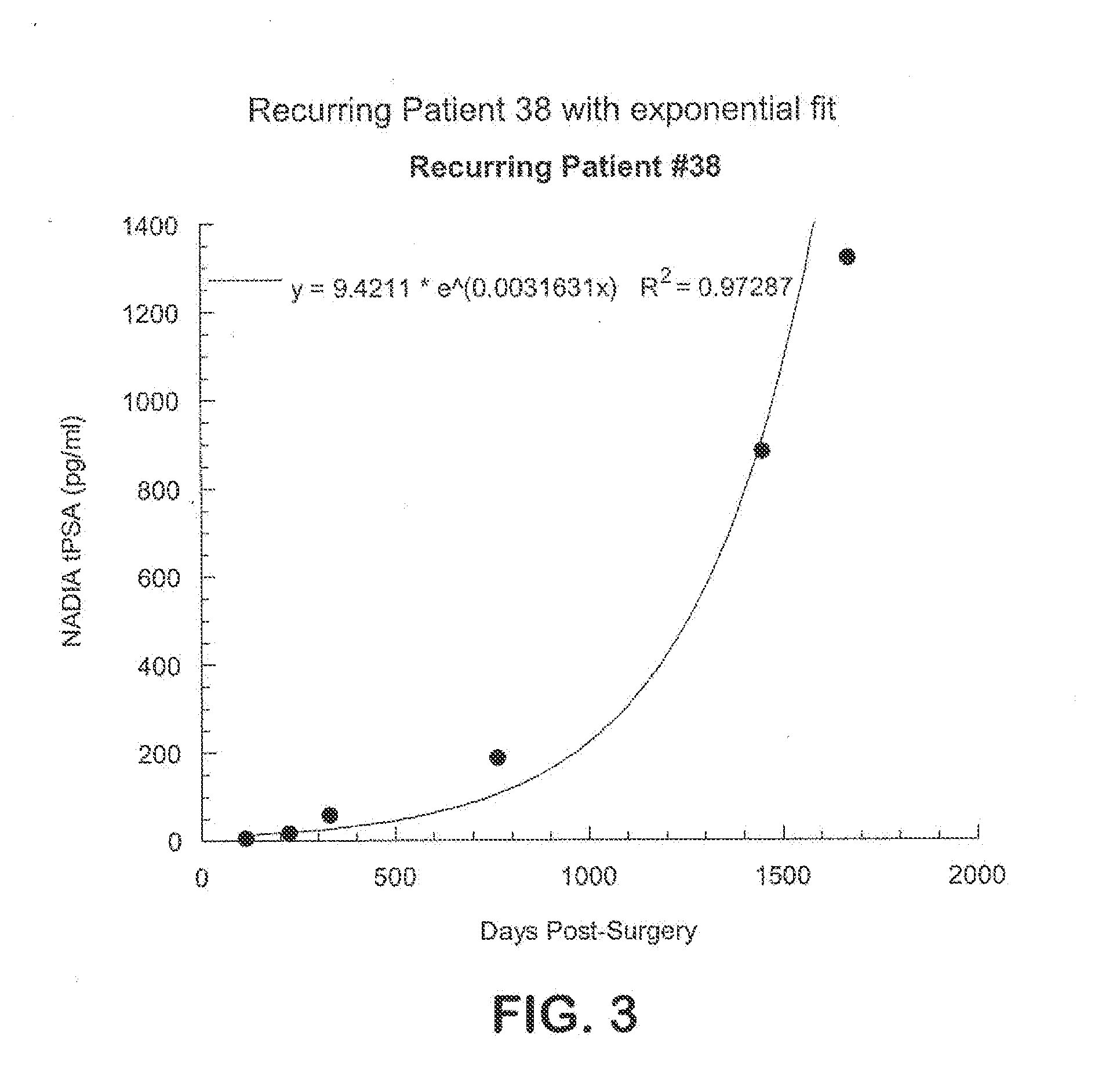Method for early determination of recurrence after therapy for prostate cancer
a prostate cancer and early detection technology, applied in the field of early detection of recurrence after prostate cancer therapy, can solve the problems of poor survival rate, insufficient early detection methods, and inability to identify the exact time of recurrence, and achieve the effect of low psa and high probability of recurren
- Summary
- Abstract
- Description
- Claims
- Application Information
AI Technical Summary
Benefits of technology
Problems solved by technology
Method used
Image
Examples
example 1
Nucleic Acid Detection Immunoassay (NADIA® Assay) for the Detection of Very Low Levels of Prostate Specific Antigen (PSA)
[0124]Total PSA (tPSA) in serum samples was measured using a nucleic acid detection immunoassay (NADIA® assay) having a functional sensitivity of 0.5 pg / mL. See Clin Chem 53(6) Suppl., 2007, #C-15. The NADIA® assay is performed in sandwich immunoassay format.
[0125]Two antibodies directed to different epitopes on PSA were employed in an assay designed to detect pg / mL levels of PSA in patient samples from men who have undergone radical prostatectomy.
example 1a
Production of Signal Nucleic Acid-Anti-PSA Conjugate
[0126]The first antibody is conjugated (chemically linked) to an oligonucleotide of 60 bases as described by Jablonski and Adams in IVD Technology, November 2006. This reporter antibody is then diluted to approximately 10-30 picomolar (pM) concentration in a buffered diluent containing bovine serum albumin (BSA) and a surfactant to decrease non-specific binding at a pH range of 7.0-7.5.
example 1b
Production of Capture Nucleic Acid-Anti-PSA Conjugate
[0127]The second antibody is immobilized on a para-magnetic particle of approximately 1 micron in diameter. The capture antibody has biotin chemically attached to it, using EZ-Link Sulfo-NHS-LC-Biotin (Sulfosuccinimidyl-6-(biotinamido) hexanoate, Catalog Number 21335 as supplied by Pierce using methods described in their catalog, and is subsequently bound to the para-magnetic particle through a streptavidin linker that has been attached to the magnetic particle by the manufacturer, Seradyn (Catalog Number 3015-2104).
PUM
| Property | Measurement | Unit |
|---|---|---|
| time | aaaaa | aaaaa |
| time | aaaaa | aaaaa |
| time | aaaaa | aaaaa |
Abstract
Description
Claims
Application Information
 Login to View More
Login to View More - R&D
- Intellectual Property
- Life Sciences
- Materials
- Tech Scout
- Unparalleled Data Quality
- Higher Quality Content
- 60% Fewer Hallucinations
Browse by: Latest US Patents, China's latest patents, Technical Efficacy Thesaurus, Application Domain, Technology Topic, Popular Technical Reports.
© 2025 PatSnap. All rights reserved.Legal|Privacy policy|Modern Slavery Act Transparency Statement|Sitemap|About US| Contact US: help@patsnap.com



